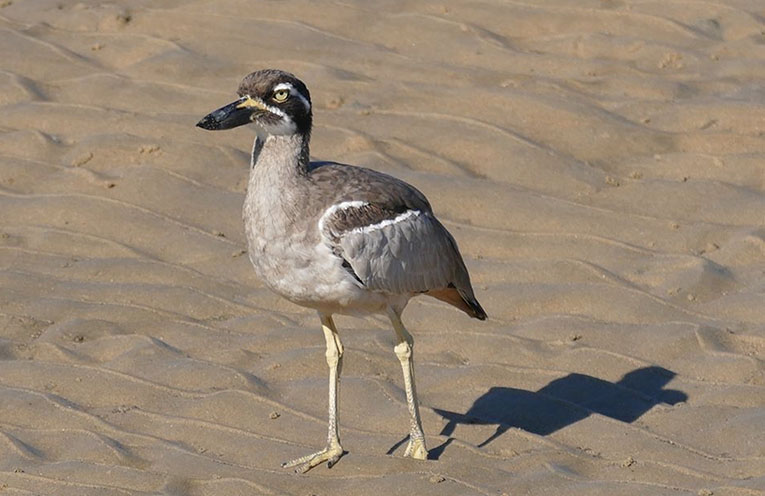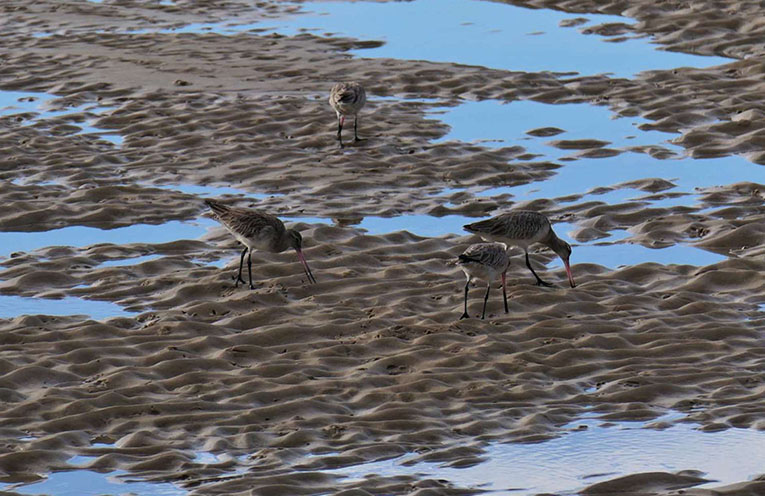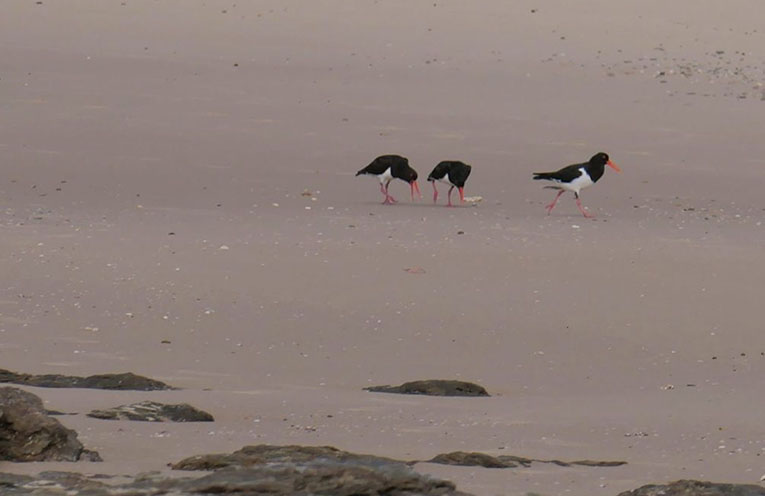
THE birdlife across Nambucca Valley is plentiful, and something that many locals spend time observing, enjoying and working to protect.
This includes those birds that nest on the beaches during spring and summer.
According to the NSW National Parks there are only six species of bird that nest on the beach along the NSW coastline.
These are the Little Tern, Pied Oystercatcher, Beach Stone-curlew, Sooty Oystercatcher, Hooded Plover, and the Red-capped Plover.
Beach nesting species that are observed in the Nambucca area are the Beach Stone-curlew (critically endangered in NSW), Red-capped Plover and Pied Oystercatcher (vulnerable).
Birdlife, an organisation with over 100 years experience protecting the habitat of native birds, has recorded that threatened migratory shorebird species are regularly sighted in the Nambucca area.
These are the Bar-tailed Godwit (Vulnerable EPBC), and the Double-banded Plover (Threatened IUCN).
According to Birdlife there have also been two separate recordings of Little Tern breeding colonies (endangered in NSW) in the Nambucca.
The numbers of these birds are declining owing to the increase in threats.
One of the biggest threats to these birds, according to the NSW National Parks, is from uncontrolled domestic dogs.
Other threats include foxes, ravens, storms and king tides.
If shorebirds are chased by dogs their breeding can be disrupted.
Roaming dogs can prey on the eggs, young and adult shorebirds when not kept under control.
The assignment and signage in Nambucca Valley by Council of ‘no dog’ areas, on-leash areas, and dedicated off-leash areas help with keeping the birds safe.
In off-lead areas it is important to have control of dogs to prevent them from running into the dunes or chasing shorebirds.
Council has advised that Rangers are out ensuring that these areas are being used correctly, and that dog walkers are usually following the rules set out on the signage.
Nambucca Valley Councillor Susan Jenvey said, “Just the other day I was walking along the beach with its stunning coastline, from Nambucca Main, to Swimming Creek and Hyland Park.
“I saw a shorebird that is a threatened species.
“People do need to understand the beach is a place of great well-being, but it may not be for shorebirds, and that a single disturbance can set birds into flight and affect their long flight home.
“Disturbance can also affect breeding.”
Cr Jenvey suggested that, “It may be time for this community to have a conversation about sectioning off parts of the dunes during the shorebirds migratory breeding time.
“A Draft Coastal Management Plan has been on exhibition that the community have made submissions to.
“There is the potential to develop a strategy from this around the further protection of shorebirds.”
You can help these birds during their nesting periods following signage rules put up by Council, keeping dogs off the dunes so nests and habitats are not disturbed, keeping below the high-tide mark, and keeping an eye out for shorebirds and nesting signs.
Information on companion animals on/off lead areas is available on the Nambucca Valley Council website at
https://nambucca.nsw.gov.au/cp_themes/default/page.asp?p=DOC-JGY-52-46-27.
By Rachel MCGREGOR-ALLEN


